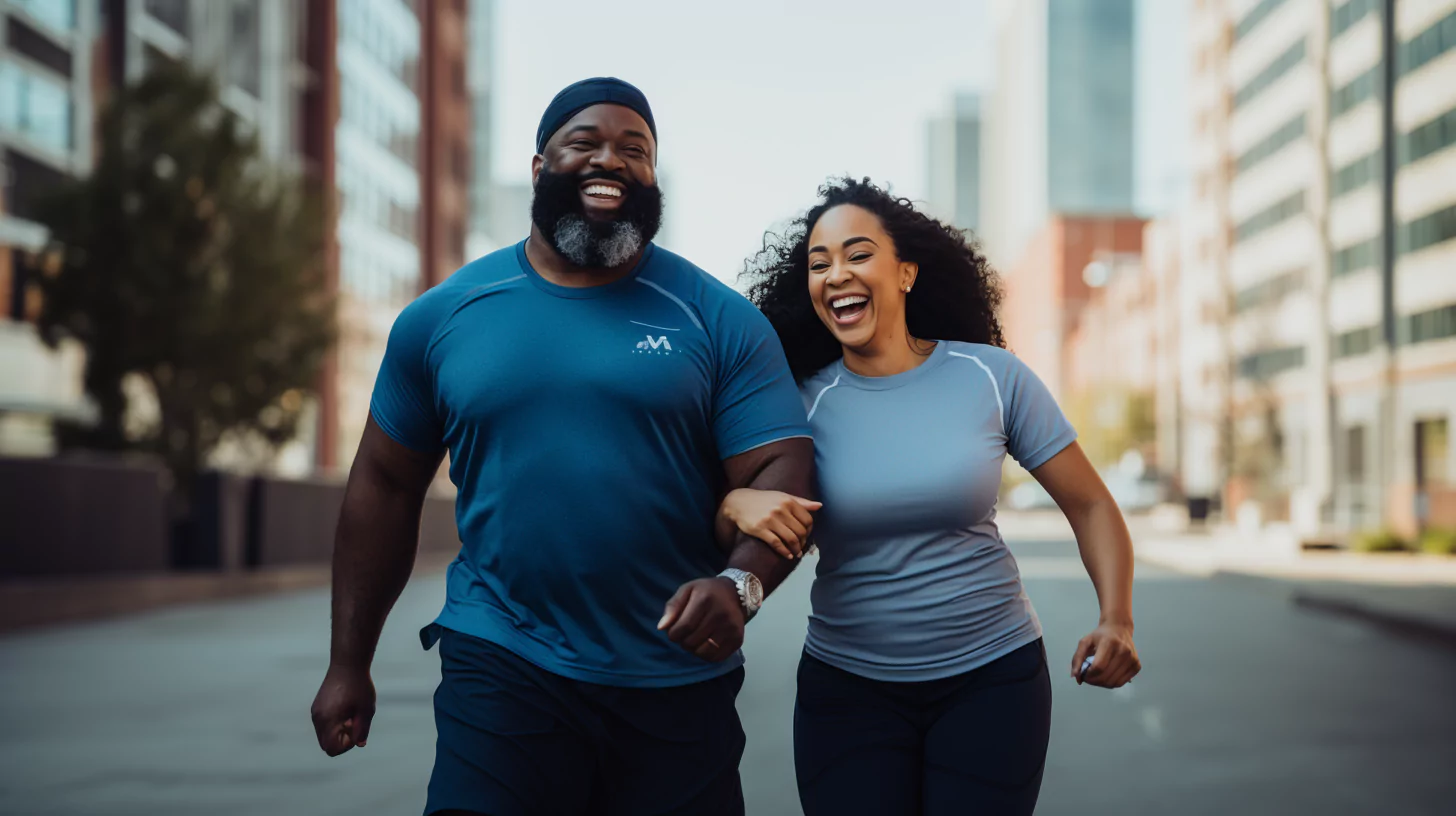If you are an endomorph, your body type is often misunderstood.
Let’s be honest: we’re obsessed with the human physique. The topic of body types is commonplace in all kinds of conversations.
While we often put bodies that are lean and athletic on a pedestal, we tend to overlook bodies that are rounder (known as the endomorph body type). We rarely try to understand them, like what dietary lifestyle and fitness regime would suit this type of frame.
If you categorize yourself by this build, here’s where you can explore how you can create a healthy lifestyle for your body type.
What Is an Endomorph Body Type?
According to the somatotype theory by psychologist William H. Sheldon, everyone falls into one of three main body types: endomorph, ectomorph, and mesomorph. Endomorphs, specifically, are characterized by shorter stature and higher levels of muscle and body fat.
While no two people have the same body, Sheldon concluded that many people share some common genetic traits that determine the main aspects of their physique. Here are a few unique features of an endomorph:
- Round heads and narrow shoulders with shorter legs and arms
- Round abdomens, slender wrists, and ankles
- Heavier upper arms, hips, and thighs
- More susceptible to weight gain than the other two body types
- Often find it difficult to lose weight
When it comes to this particular body type, you may think of Austin Power’s Fat Bastard, Hairspray’s Tracy Turnblad, or Moana’s Maui.
Don’t be fooled, though, because endomorph does not equal fat. There are some incredible people out there who represent the endomorph community, including Beyoncé, Ashley Graham, Anthony Anderson, and Gerard Butler.
Unsure if you fall into this somatotype? Here’s a quiz to find out.
Endomorph females vs. endomorph males
It’s no secret that both genders are physically built differently. So when it comes to endomorph females vs. endomorph males, there’s one main contrast: the way in which their bodies store fat.
- For endomorph females. Endomorph or not, women naturally have a higher percentage of body fat than their counterparts. Whereas the male body needs only 3% of body fat to function properly, the female body needs 12%.
When they gain weight, endomorph females tend to store it around the hips, buttocks, and thighs. This gives them the pear shape that’s become synonymous with the endomorph body type. - For endomorph males. On the other side of the gender spectrum, endomorph males typically store excess weight in the belly area. This occurs due to a major difference in the skeletal frame.
You see, men’s bodies are genetically equipped to support more muscle mass, which is why they have a larger frame. Meanwhile, women have naturally wider hips to allow for pelvis expansion during pregnancy.
If you have this particular body type, you can still keep your figure in check. Take a look at Rebel Wilson and Chris Pratt, for instance. They’re two endomorphs who, with a combination of the perfect diet and exercise for this somatotype, have managed to transform their bodies.
And if they can do it, so can you.
Endomorph Diet: What Should You Eat?
It’s a great big myth that in order to get into a healthier form, you only need to change your diet or just start exercising. It helps, no doubt. However, as any health coach would advise, both depend on each other.
As Ronan Diego de Oliveira, trainer of Mindvalley’s 10X Quest, says: “Training without proper nutrition doesn’t get you anywhere.”
So here are three things you can do to frame your food goals:
1. Choose the right macronutrients
To successfully lose weight as an endomorph, you should adjust your intake of macronutrients.
If you’re wondering what those are, macronutrients are the three main groups of foods that provide your body with the energy it needs to function: protein, carbohydrates, and fats.
Per the American Council on Exercise, for optimal results, the endomorph macros look like this:
- 30% of your daily calorie intake should come from carbohydrates,
- 35% from high-quality protein, and
- 35% from fat.
Depending on your body goals, you can get even more energy from fat (up to 40%) while further reducing your carb intake (25% or more).
2. Make small changes to support your food choices
Making abrupt dietary changes can be downright overwhelming. According to U.S. News, 80% of New Year’s diet resolutions fail by February.
So take it one step at a time. You can start by putting certain practices in place and follow through with consistency:
- Lower your carbohydrate intake gradually. You can start by removing all unhealthy carbs from your diet, including processed sugars, soft drinks, and refined-grain products like white rice, white pasta, and white bread. Replace them with non-starchy vegetables like leafy greens and whole grains like brown rice and wild rice.
- Incorporate whole grains into your diet. They’re particularly important as they contain plenty of dietary fiber, which takes longer to digest, making you feel full for longer periods of time.
- Always go for high-quality, lean protein. This can commonly be found in chicken, fish, and tofu.
- Limit your intake of trans fats and saturated fats in favor of healthy monounsaturated fats found in dietary oils (especially olive oil), avocado, and nuts.
- Practice intuitive eating. Chew slowly and be more mindful while eating to give your body more time to break up carbohydrates.
It also helps to manipulate your environment to support your dietary journey. For example, if you’re unable to resist the temptations of junk food, don’t have them in your house.
“The most disciplined people who get very far in their fitness journey are not the ones who resist the temptation of not having the cereals or the gummy bears,” says Ronan, who is also Mindvalley’s Head of Health & Fitness. “They’re the people who don’t have cereals and gummy bears at home, to begin with.”
3. Home cook at least 80% of your meals
One great way to kickstart your health journey is to make your own meals. Sure, restaurant foods are scrumptious, and with apps like UberEats, life is just easier. However, easy doesn’t always mean healthy (case in point: ramen noodles).
Home cooking allows you to control your portions, which then limits your calorie intake and, in turn, positively impacts your health. Here are three studies that show the benefits of homemade meals:
- A 2015 study from the University of Illinois found that when Americans dine out, they consume an average of 200 more calories a day than when they eat at home. What’s more, they tend to take in more fat, saturated fat, cholesterol, and sodium.
- Eating home-cooked meals more frequently is associated with better dietary quality, according to a 2017 study published in the International Journal of Behavioral Nutrition and Physical Activity. It shows eating in lowers the risk of obesity, cholesterol, and diabetes.
- There are also multiple research that suggest those who often eat out are more likely to have harmful chemicals in their blood, as reported in MedicalNewsToday. These chemicals are linked to several health problems. So cooking and eating meals at home help keep these substances at bay.
If home cooking isn’t your forte, fret not. You can always start with “30 Min or Less” recipes and work your way up. Remember: one step at a time.

Endomorph Workout: How Should You Exercise?
Due to their slower metabolisms, endomorphs tend to gain fat more readily than the other two somatotypes. And more often than not, many, at some point in their lives, will try to do something to decrease their weight.
“When it comes to moving the body and exercise, people used to go straight away into a lot of cardio,” says Ronan. While it’s not bad for you, he suggests there are more effective strategies to build muscles or tone them.
So here are three ways to level up your fitness game.
1. High-intensity interval training
If you’re an endomorph looking to lose weight, high-intensity interval training (HIIT) may be the best choice. According to a 2011 study, this technique could help you burn both subcutaneous and visceral fat much more efficiently than other exercise techniques.
As part of HIIT, you’ll be training at a very high intensity for a certain amount of time, only to follow it up with a period of low-intensity training or rest before repeating the whole process. For example, you sprint at maximum speed for 60 seconds, then spend the next four minutes walking, and then repeat the routine another three to five times.
2. Strength training
Strength training is another important part of your endomorph workout routine. Muscle burns more calories than fat. By building up your muscular endurance and strength at least three days a week, you’ll improve your metabolism and train your body to burn calories more efficiently.
For maximum effect, you should work on all four major muscle groups.
Squats, pull-ups, and push-ups are some of the more common exercises that you can incorporate into your routine. If your goal is to add muscle mass, you should also incorporate a resistance band or free weights.
3. Free weights
Another type of full-body workout that an endomorph can do is free weight training. That’s because it boosts your metabolism for up to two days after training. So, if you go to the gym three or four times a week, you’ll give your metabolism a perpetual boost.
Similar rules apply to muscle building, whether you’re bulking up or toning. The more muscle you add, the faster your metabolism will become and the less prone your body will be to storing fat cells. This, in effect, means that you could reverse your body’s natural tendency to gain fat.
As for the concrete exercises to add to your workout regimen, start with those that involve multiple muscle groups—squats, deadlifts, overhead presses, and dips.
Ideally, you should complete five repetitions of each exercise for up to five sets per exercise. If you’re a newbie, start slowly and then gradually build up to 20 or so sets per workout.
Over time, you should be able to complete between eight and 12 repetitions to failure. Once you manage to do that, it’s time to move on to individual muscle groups.
Bonus: cardio
Cardio to a fitness regime is like salt to cooking—with the right amount, it intensifies the flavor in the very best way. And like all other body types, endomorphs need cardio to keep their hearts healthy.
Since their bodies are naturally predisposed to storing fat, they will need more cardio to achieve significant fat loss and ensure optimal muscle growth.
A word to remember
No matter what stage of your workout regimen you’re at, make sure to always take a day off in between workouts.
That way, your muscles will have enough time to recover while your body continues to burn fat, thanks to the afterburn effect.
Awaken Your Unstoppable
It’s up to you to make your life great. Whatever your body goals are and no matter your age, your success depends on you.
Besides healthy eating and working out, mindfulness, meditation, and regular sleep are also important components of a healthy lifestyle. These are the things that Mindvalley’s 10X Quest teaches you.
And with Ronan as your guide, you’ll learn how to activate your body’s adaptive response, a key evolutionary mechanism that commands your body to get stronger, fitter, faster, and more resilient, in a surprisingly short space of time.
It’s time to make a change. And it all starts with you.









